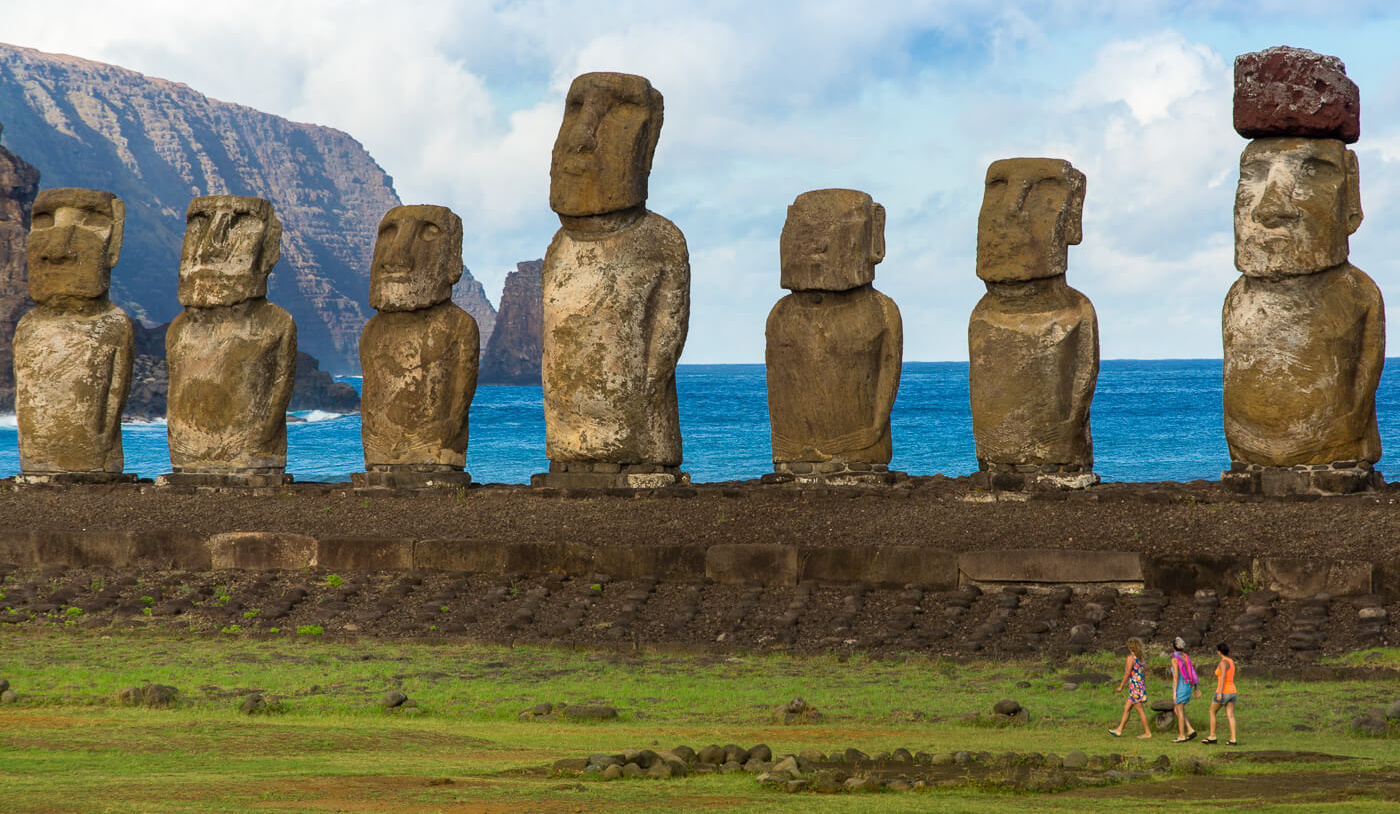
How Natural Stone Is Quarried
One of the most mysterious quarries in the world is found in one of the world’s most isolated places in the world: Rapa Nui (better known as Easter Island). Easter Island is the third corner of the Polynesian Triangle, the other two corners being New Zealand and the Hawaiian Islands. It is located approximately 2,000 miles off of Chile’s Pacific coast.
Stonework was a large part of the island’s culture from the 13th to 16th century, both in size and in focus. Easter Island’s stoneworkers carved large statues out of the islands volcanic rock. These statues, called Moai, were intended to ward off evil spirits and protect the villages they overlooked. Unlike most statue makers, who carve their works from free-standing blocks already removed from a quarry, the Easter Island stoneworkers simply carved the moai right out of the hill. Half-finished works can still be found at the island’s hillside quarry. Much like the Egyptian pyramids, the method of transportation of the massive stone moai, some of which measure up to 33 feet in length and 70 tons in weight, is still the subject of much debate. There is also a lack of understanding over the moai quarrying methods. First, the Rapa Nui had no written tradition. Information on quarrying techniques was simply passed orally from generation to generation. Second, the island was almost completely decimated after years of war between neighboring clans, thus killing off much of the knowledge about the quarries and the island’s people. During this turmoil many of the Moai were toppled over. Historians have since raised many of the statues and made some progress in uncovering the history of the Rapa Nui and their works. Nonetheless, the island, its people, and its stone works are still very much shrouded in mystery.
Today, of course, we are much more proficient in quarrying then the Rapa Nui or the ancient Egyptians who built the pyramids. Today’s quarries are generally classified as a type of mine used for extracting dimension stone (blocks of stone) for residential and commercial building purposes. Quarries can be found in almost every corner of the earth (even Easter Island, one of the world’s most isolated places). Limestone, gypsum, granite, marble, sandstone and slate are just a few of the many quarried materials.
A great deal of work goes into determining quarry location and size where quality blocks can be extracted. Specialized drill bits are used to remove core samples. Those samples are then tested to ensure suitability. Once polished, the stone colors and patterns are evaluated to ensure the appropriate aesthetics are met. Licenses are required for all quarries, and the process for applying varies from country to country, sometimes taking years.
So how is natural stone quarried today?
There are essentially two types of quarries. The most popular (and the one we will discuss) is the open-pit quarry, but there are also some quarries that are underground.
Modern quarrying methods are almost surely safer, more advanced, and use less manpower than those of the Rapa Nui. [Unless of course, you believe in one conspiracy theory; the enormous structures were moved by alien intervention. If that’s correct, then there may be some debate over whose techniques are more advanced.] All of the modern stone-removal techniques ultimately yield the same result, a block of stone to be transported out of the quarry to a gang-saw mill or slabbing facility.
There are various techniques available to the modern quarrymen to remove the stones. The ones we will touch on are: blasting, jet-burner channeling, diamond-wire saw, wedges and feathers. The majority of blocks have at least two sides that need to be separated from the stone base of the quarry. Therefore, multiple methods are generally used to remove one block of rock.
Regardless of the method, stone extraction from the quarry is a delicate process. In order to reach the quarry, dirt may have to be removed, or even tunnels dug to reach the stone. The same stone can take on many different looks just based on how the block is cut and later processed. When the stone is cut with the flow of the source stone, it is referred to as Vein Cut. This cut highlights the movement in the rock. Alternatively if the block is cut against the vein, it is called a Cross-Cut, creating a more uniform look for the stone.
Blasting
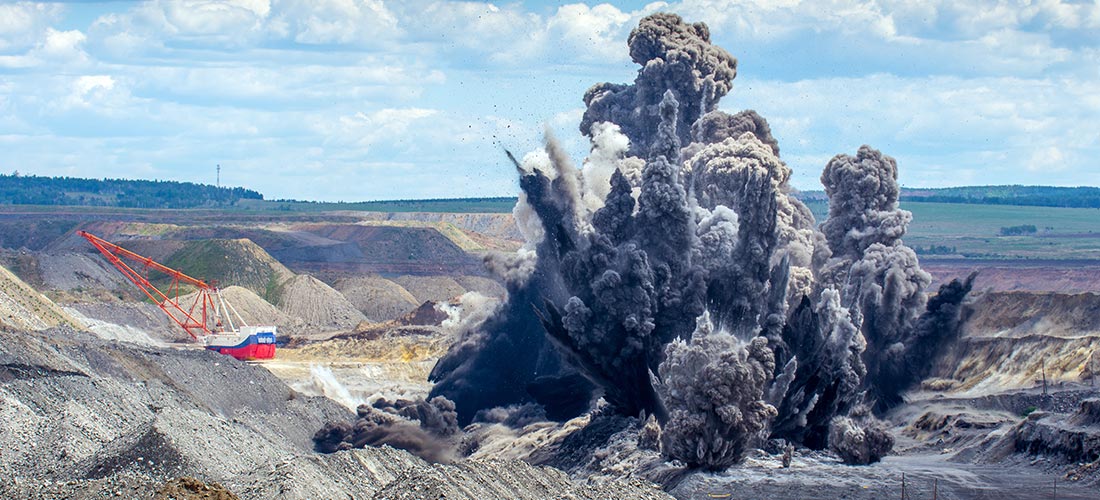
Blasting, the most preferred method by pyromaniac enthusiasts is one way to use good old fashioned firepower and, “Blow that sucker loose!” How is this done? By precision controlled rock blasting. Small holes are drilled into the rock in a pattern. Blast specialists calculate and use only the amount of explosive in each of those small holes necessary to break the rock just around each hole. Each hole is detonated in a sequence, but the timing is so minimal between blasts that to the naked eye it appears as one big boom. This sequencing allows only a fraction of the total amount of explosive used to fire at any one time. The firing sequence is controlled in such a way that each hole that is firing is moving the rock towards a hole that has already been fired. These subsequent explosions separate the stone block from the quarry wall. If blasting is being used as the last step to completely detach the stone block, the block may actually jump up to 18 inches as a result of the impact from the explosions. (Sometimes quarrymen, working adjacent to the blast areas, that have not been notified of a scheduled blast also jump 18 inches or more upon explosion.)
Jet-Burner Channeling
Since the 1950’s rocket power has been employed to channel stone. Not the NASA space-shuttle type of rocket power, but rocket power nonetheless, just on a much smaller scale. Specifically, it is a miniature rocket motor (no bigger than 4″ in diameter) at the end of a long steel pipe that is burning a pressurized mixture of fuel and air. This fiery fusion burns at 2,800 degrees Fahrenheit with a force of 4,000 feet per second, or five times the speed of sound. This jet-burner channels a 4″ diameter hole into the stone working at a rate of about 14 square feet per hour. It’s capable of channeling up to a 15 foot depth. Channels are bored adjacently until the desired length of rock has been separated from its stone base.
Diamond-Wire Saw
The saying goes: “Diamonds are a girl’s best friend.” Well, they’re also a stone workers best friend. There is no need to be jealous though ladies, it’s synthetic diamonds, not real, that are widely used throughout the industry. As diamonds are one of the few materials harder than granite, they are applied to stone tooling to: cut, grind, drill, and polish. We’ll look more at the use of synthetic-diamonds tools in the next sections as we continue to explore the stone industry.
The diamond-wire saw, as the name indicates, is a type of saw used in quarrying. The wire saw uses synthetic diamonds as the abrasion to cut through the stone. The saw basically consists of two parts: an engine and a steel wire laced with diamond-impregnated beads. This wire is fed through previously drilled channels. The wire is joined together to create a continuous strand and a motor spins the wire pulling the loop through the stone. You may ask, “Why there is no dust during the cutting process?” Water is applied to the saw so that the dust is trapped in the water before being dispersed into the air. Air-bound stone dust, similar to cigarette smoke, is a health hazard for workers, so water is used throughout the industry to minimize this exposure. A wire saw is used primarily on softer stones like marble, travertine, limestone and onyx, etc.
One advantage of the diamond-wire saw is its speed. It can cut 35 to 40 square feet of granite per hour, a rate four to five times faster than the jet burner. It can also operate, aside from the initial setup, with minimal manpower.
Although you may think that an advantage of the diamond-wire saw is that a quarry worker, who has forgotten an anniversary gift for their wife, can take a section of the diamond wire home as a last-second resort; you’d be wrong. The diamond wire isn’t visually appealing. So, before you guys go professing your eternal love for your lady with a section of diamond-saw wire, remember that it looks more like a plain steel cable than a Tiffany necklace.
Wedge and Feather
Also known as wedge and shim, the wedge and feather method lacks most of the thrill and allure of other techniques and is by far the oldest method. The ancient Egyptians used a wedge and feather method for their limestone blocks, and even then the practice was considered old. Nonetheless, it is still widely used today for its simplicity and cost effectiveness. Feathers (see picture) are first placed into holes drilled in a successive line. Wedges are then hammered into the feathers, spreading them and splitting the stone. Different size wedges and feathers are used to make different length splits. Larger sets of wedges and feathers are used for longer splits and smaller sets for shorter ones.
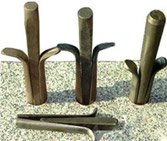
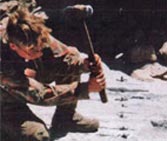
Transportation Out of the Quarry
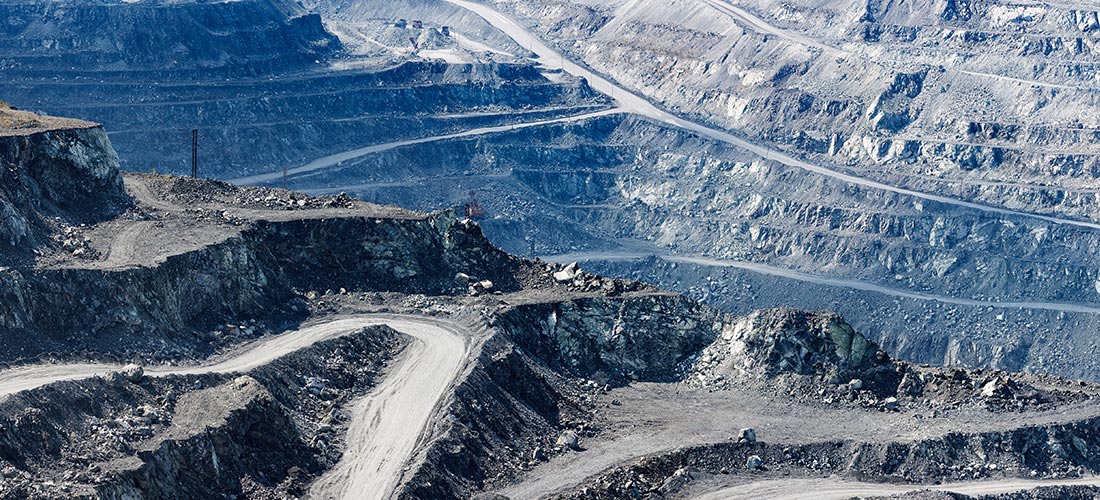
Blocks of stone vary in size, but one that we might use after it is cut into polished granite slabs for countertop use, would measure up to 7 feet high by 7 feet wide by 10 feet wide (so 490 cubic feet in volume). If we use our original calculation, from the first section that the granite weighs about 165 pounds per cubic foot, this block of granite would weigh approximately 40 tons. Because these blocks are too massive to be lifted by hand, after freeing one of the blocks of stone, large hooks are placed in holes drilled at each end of the block. A boom is then used to lift the block onto a truck for transportation to the next phase of the stones journey to someone’s kitchen or bath.
Restoring Closed Quarries
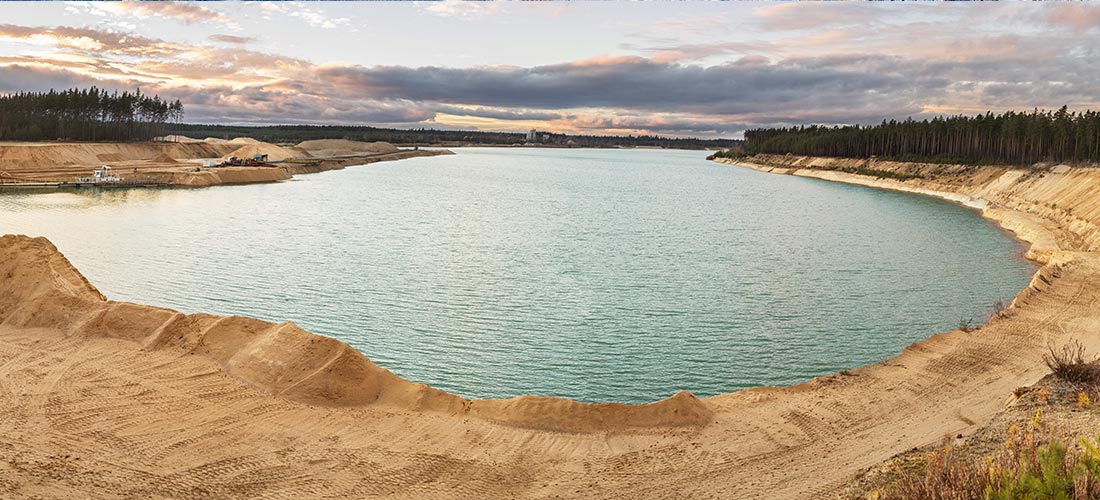
Unlike the ancient quarry at Rapa Nui, which was just deserted, today most countries require exhausted quarries to be restored. Some quarries are filled with water and made into lakes, some are used for landfills, some are further excavated into golf courses and resorts, and some are landscaped into nature preserves. As we’ve seen, the modern stone industry definitely has one up on the Rapa Nui with respect to quarrying techniques and post- exhaustion quarry use. However, the Easter Islanders still hold the advantage in the alien- technology category.
Bay Harbor
Bay Harbor Resort is an example of an exhausted quarry that has been transformed into a resort. One of the original limestone quarry walls can still be seen above the large red-roofed building and below the row of smaller white buildings, adjacent to Lake Michigan. The larger areas of quarrying activity, away from the lake, have been converted into a 27 hole golf course that has been artfully integrated into the natural quarry areas producing a beautiful backdrop for most of the golf holes.

The marina at Bay Harbor is one of the deepest harbors in the Great Lakes at about 70 feet deep. For over 100 years, the site was used as a limestone quarry primarily for aggregate used for cement production in Alpena, Michigan.
When the quarry was closed, the rock wall that functioned as a dam, separating Lake Michigan from the quarry was blasted out, allowing water from Lake Michigan to rush in at one million gallons per minute. Within 24 hours, over 2.5 billion gallons would form the new Bay Harbor Marina.
JOURNEY OF GRANITE COUNTERTOPS
FROM THE QUARRY TO YOUR KITCHEN: A TOUR OF THE GRANITE LAKES GRANITE & MARBLE COUNTERTOP PROCESS
Prior to being installed in your kitchen, your granite takes quite a journey. Watch this video to find out where it comes from, how it is extracted from the earth, transported, cut and polished. You’ll also see how Great Lakes Granite & Marble custom measures your kitchen and turns the granite slabs into the pieces of your countertop.

